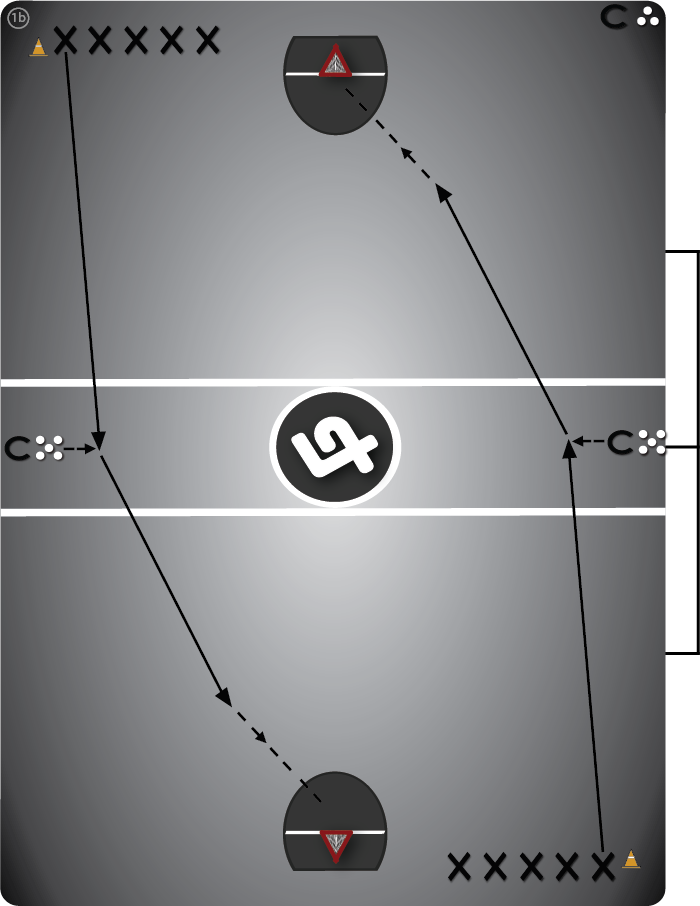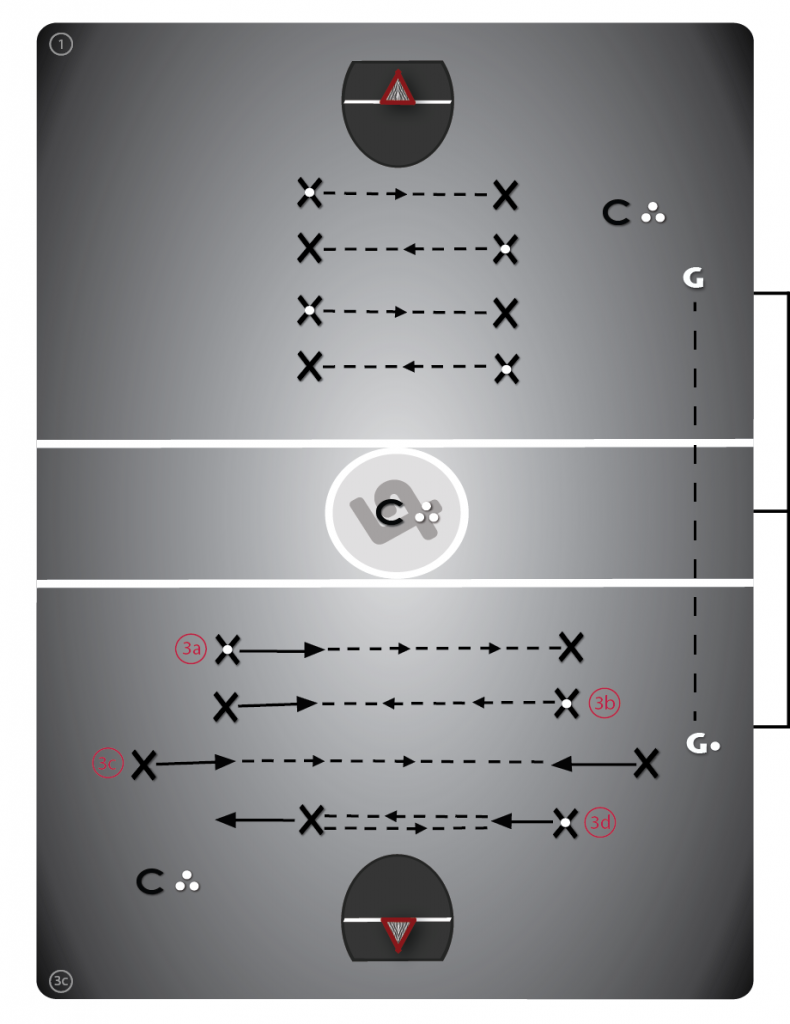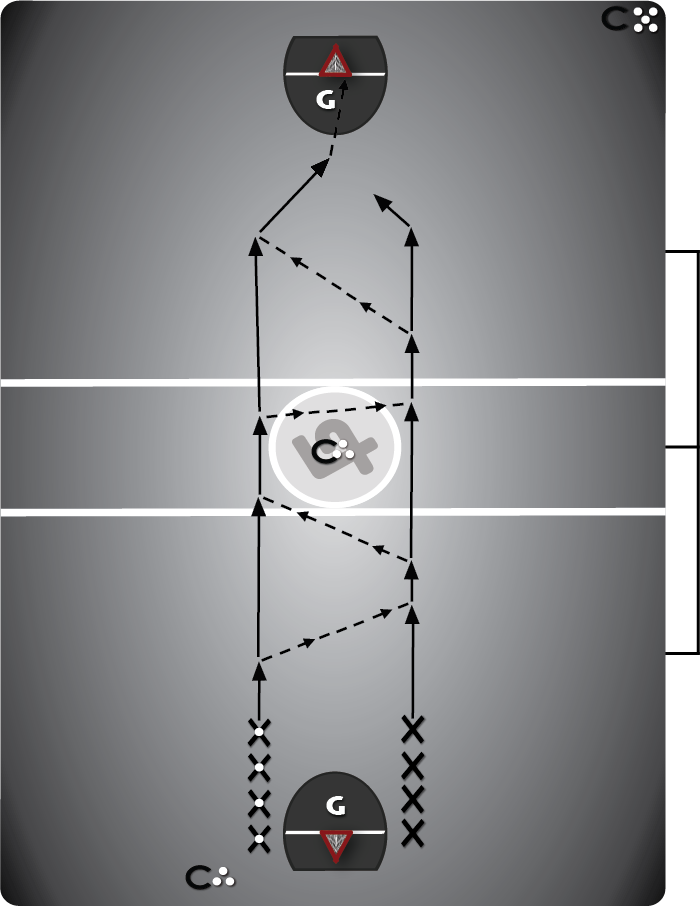Beginner Lacrosse Drills: Don’t Start With Passing & Catching!
The fundamentals of lacrosse include: basic defense, scooping (loose balls), cradling/ball protection, basic transition, passing, catching, shooting & basic offense (appearing hypothetically in that order). You play good defense, knock the ball loose, pick it up, protect it and/or cradle it forward, pass the ball to any open players ahead of you, catch the pass and then shoot it if you are undefended and in the middle of the defense; otherwise creating a shot with basic offensive maneuvers. This is the order of operations in lacrosse, and this is the order we introduced the fundamentals in our first 3 (free) one-hour practices for beginners, requiring only helmets & gloves, nets & balls.
In this blog, we are actually going to start where, in our opinion, most coaches go wrong in teaching first-timers, and that’s starting with passing and catching! Usually, we would start with defense, loose balls, then cradling/ball protection, before getting to passing and catching, as this is the order that the skills appear in a hypothetical game. Below, you will find a great drill for warming up the catching skills of beginners, eventually getting into stationary passing & catching progressions and later dynamic passing-on-the-run.

Drill #1: Catching On-The-Run

This first warm-up drill is a great starting point for continuing to build on the dynamic aspects of catching. In its most simplest form, our Laxlife Fundamentals Practice #1 broke Catching down to a coach or teammate underhand passing the ball with their hand into the player’s stick (above their shoulder in “the box”); where required. In this drill we are essentially doing the same thing except the player is now in motion, yet the ball remains relatively stable.
The coaches are at centre-floor (by the side-boards) with a pile of balls and as a player approaches, the coach throws the ball straight up into the air for the player to then run underneath and catch (ideally over their shoulder). Players then go in for a breakaway shot on the goalie or open net (from mid-range - perhaps put a pylon down for a marker), being sure to get to their proper side where necessary. In that respect, coaches should also switch which corner the line they are throwing to is coming from, in that way players will have the chance to catch the ball with their stick towards the boards, and also with their stick towards the middle.
This drill is also one of the drills we use to track the dynamic catching skills of players in our Fundamental Skills Tracking Sheet.
Drill #2: Partner Passing

Here it is assumed that players have already gone through a series of drills for the fundamentals of passing and catching, and have likely already done the partner passing drills to follow. However, the difference is that this time coaches will be adamant that passers use basic footwork (performing changes of direction while running forward, back-pedaling and/or side-shuffling), before passing.
People can typically only remember 2-3 pieces of information maximum in any given scenario, so the first time through partner passing, as in our Laxlife Fundamentals Practice #2, we had players focus on basic footwork for instance, stepping with the opposite-side leg from the hand with which they throw. That was combined with remembering to reach their arms when they prepare to pass, and transferring their weight from their back foot to their front foot. We are now asking players to pass while slightly off balance, maintaining the triple threat position (“shopping") and focusing more on their follow through. This is a further example of the horizontal integration required to efficiently build up a stabilized fundamental skill.
The drill variations remain the same as in the basic fundamentals practices, beginning with stationary catching (regular and later “facing away”), except this time players progress to both a dynamic passer and a dynamic receiver running towards each other (Variation #3C).
Drill #3: "Staggered" Partner Passing On-The Run

The previous drill increased the movement of the passer and the receiver, yet still within a confined space. In this drill players are now asked to pass and catch on-the-run, while running in the open floor, with players now getting the opportunity to explore the concept of “lead” passing; throwing the ball to where the player is headed, not where they currently are.
Starting with two parallel lines at the top of one of the creases, and players on their wrong floor-side (which may seem counterintuitive at first), just the receiver runs forward while the passer uses basic footwork to deliver the pass. The passer then runs forward and becomes the receiver, while the original receiver becomes the passer. Players must make lead passes to each other while running from one end to the other; finishing with a quality shot on net. They may also need to “soften up” their pass when they are this close together.
Start slow, around 50% of maximum speed and move players progressively further apart. After a few reps this way (which is generally easier), players now switch to starting on their proper floor side, which is a bit more challenging of a pass to gauge, as the receiver’s stick is now trailing behind their body as they run forward. The passer as well, needs to consciously reach their stick back, and open their hips to make a successful pass. No side-shuffling is allowed; players should always be running straight forward, side-by-side, separated by gradually increased distances.
Don’t Do It!
It may be hypocritical that we say not to start with passing and catching when teaching the fundamentals to first time lacrosse players, and then go and do our first fundamentals blog on passing and catching progressions. The truth is, there are always exceptions, and this case, practical considerations (Covid-19).
Originally we had intended to release our blog on “Individual Defensive Skill Progressions” first, but we had to stay flexible and adaptable given the situation, which is a big part of coaching (and life). Players as well, perhaps don’t always have all of the tools available to their peers; it’s important to be versatile! Use your imagination. Stay safe, and continue to spread the medicine game to those in need!
0 Comments